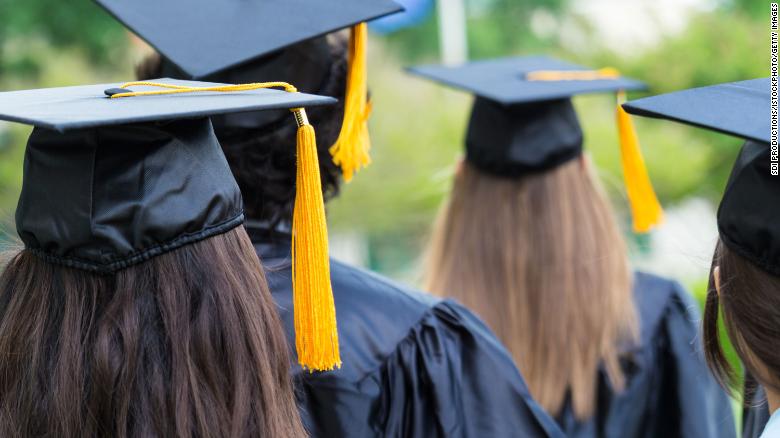
Washington (CNN)The Supreme Court struck down President Joe Biden's student loan forgiveness program Friday, blocking millions of borrowers from receiving up to $20,000 in federal student debt relief, just months before student loan payments are set to restart after a yearslong pause.
Biden had announced the student loan forgiveness program last August, but it never took effect, having been tied up in the courts for months.
The president is expected to announce new actions to protect student loan borrowers later Friday.
Ways borrowers can still seek debt relief
The Biden administration has made it easier for many borrowers to seek federal student loan forgiveness from several existing debt cancellation programs.
New rules set to take effect in July could broaden eligibility for the
Public Service Loan Forgiveness program, which is aimed at helping government and nonprofit workers. And a new income-driven repayment plan proposal is meant to lower eligible borrowers' monthly payments and reduce the amount they pay back over time. Parts of that new repayment plan are expected to go into effect later this year.
The Department of Education has also made it easier for borrowers who were
misled by their for-profit college to apply for student loan forgiveness under a program known as borrower defense to repayment, as well as for those who are permanently disabled.
Altogether, the Biden administration has approved more than $66 billion in targeted loan relief to nearly 2.2 million borrowers.
Student loan payments will restart soon
Regardless of the way the Supreme Court ruled on the one-time forgiveness program, the Biden administration had said that student loan payments will be due starting in October.
Most student loan borrowers have not been required to make payments on their federal student loans since March 2020, when Congress passed a sweeping aid program to help people struggling financially because of the Covid-19 pandemic.
Since then, the pause has been extended eight times -- under both the Trump and Biden administrations.
A law passed in early June that addresses the debt ceiling prohibits another extension of the pause.
Here's what borrowers should do now
Student loan experts recommend that borrowers reach out to their student loan servicer with any questions about their loans as soon as possible.
After such a long pause, many borrowers may be confused about how much they owe, when to pay and how. Millions of borrowers will have a
different servicer handling their student loans since the last time they made a payment.
Borrowers should also reach out to their servicer if they are worried they will not be able to afford their monthly payment. They may be eligible for an income-driven repayment plan, which set payments based on income and family size, but require borrowers to submit some paperwork.
Federal student loan borrowers can check the
FSA website for updates on resuming payments.
Borrowers will also have to reauthorize the automatic debit from their accounts to pay their monthly loan bill even if they authorized the withdrawals before the pause began.
The National Association of Student Financial Aid Administrators warns that borrowers may need to have patience when contacting their student loan servicer, which might be overwhelmed with a high volume of inquiries at this time.
"It is possible you may not reach your servicer via phone the first time you call, and you may need to call a few times before getting connected," the group says.
What happened to the student loan forgiveness program
No debt had been canceled, even though the Biden administration had received about 26 million applications for relief last year and approved 16 million of them.
The forgiveness program, estimated to cost $400 billion, would have fulfilled a campaign promise of Biden's to cancel some student loan debt. But a group of Republican-led states and other conservative groups took the administration to court over the program, claiming that the executive branch does not have the power to so broadly cancel student debt in the proposed manner.
Critics also point out that the one-time student loan forgiveness program does nothing to address the cost of college for future students and could even lead to an increase in tuition. Some Democrats joined Republicans in voting for a bill to block the program. Both the
Senate and the House passed the measure, but
Biden vetoed the bill in early June.
Who would have received debt relief?
Under Biden's student loan forgiveness proposal, individual borrowers who made less than $125,000 in either 2020 or 2021 and married couples or heads of households who made less than $250,000 a year would have seen up to $10,000 of their federal student loan debt forgiven.
If a qualifying borrower also received a federal Pell grant while enrolled in college, the individual would have been eligible for up to $20,000 of debt forgiveness.
Pell grants are awarded to millions of low-income students each year, based on factors including their family's size and income and the cost charged by their college. These borrowers are also more likely to struggle to repay their student debt and end up in default.
The administration estimated that
roughly 20 million borrowers would have seen their entire federal student loan balance wiped away.
An independent analysis from the Penn Wharton Budget Model found that about two-thirds of the student debt cancellation would have gone to households
making $88,000 a year or less.